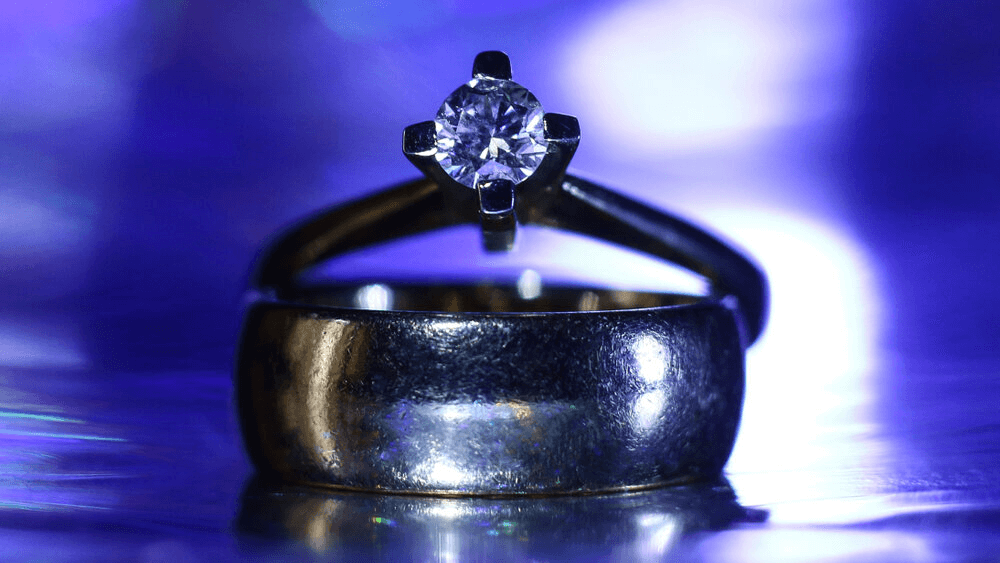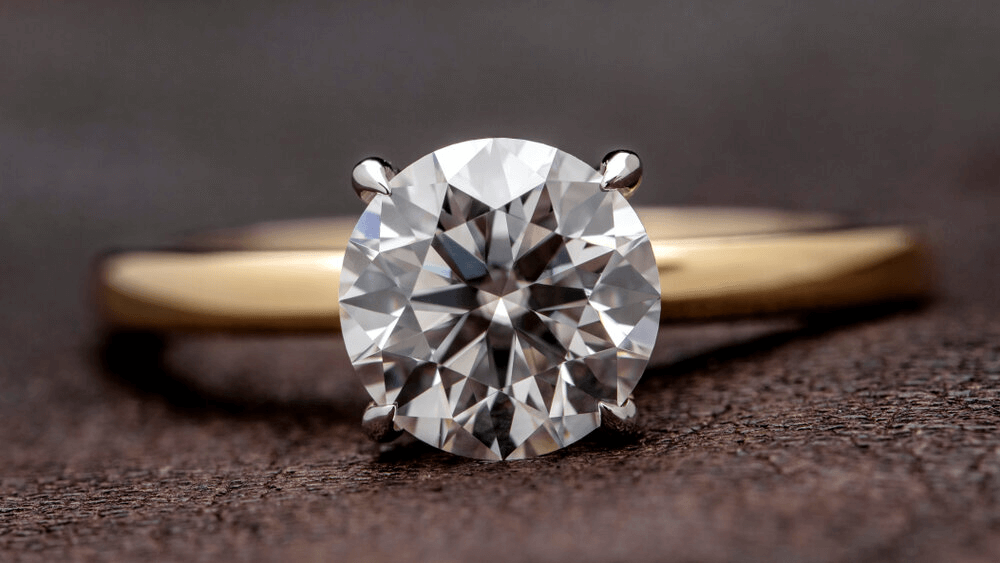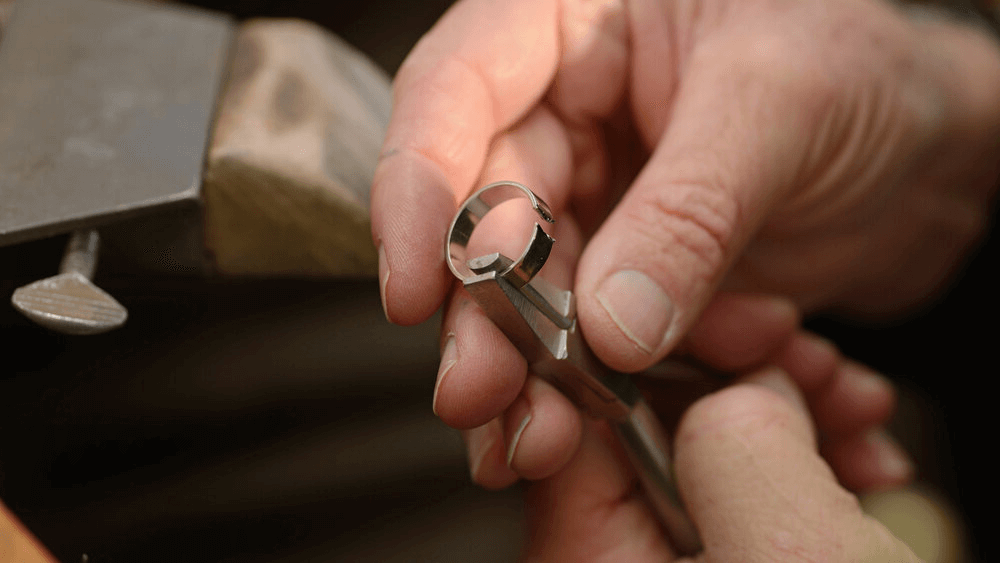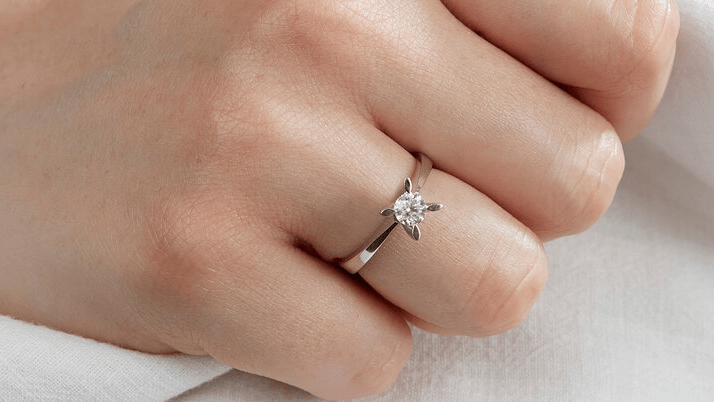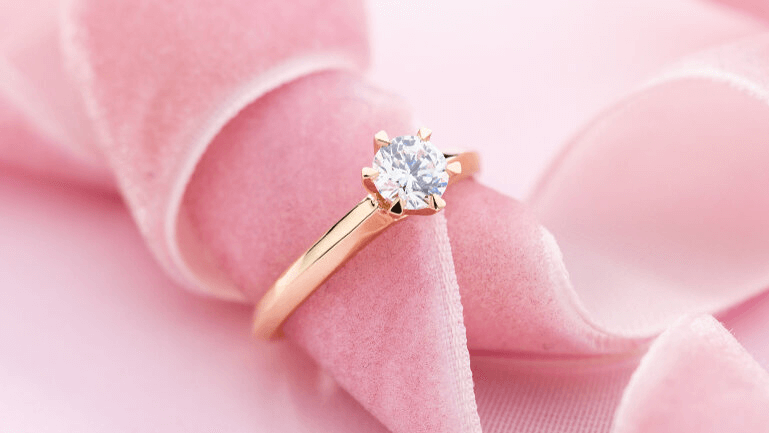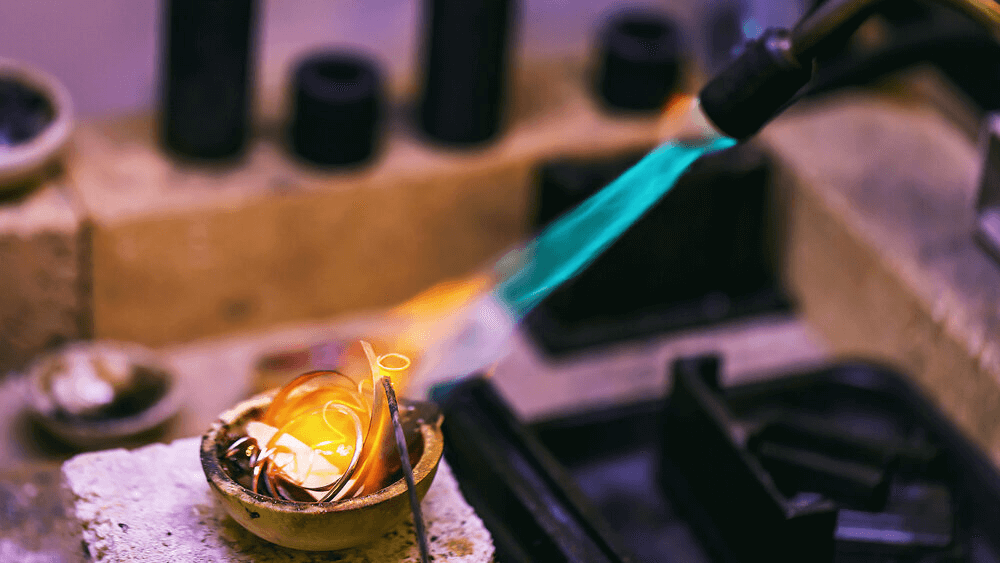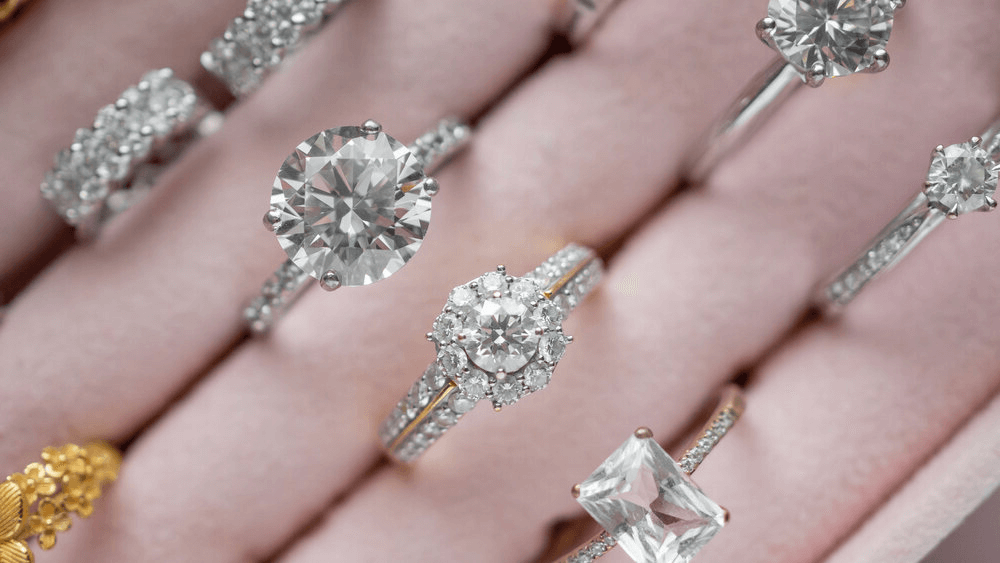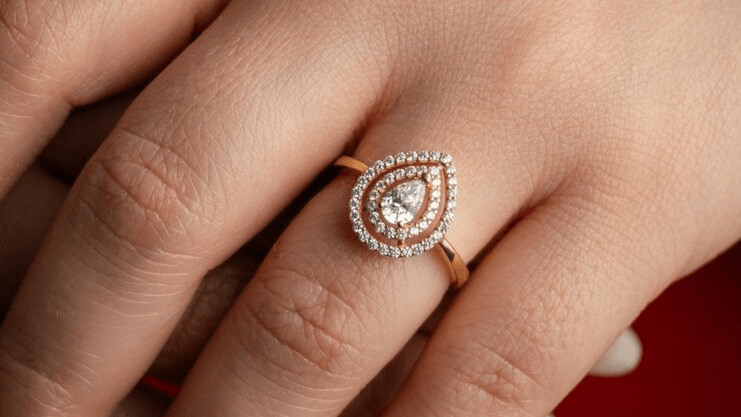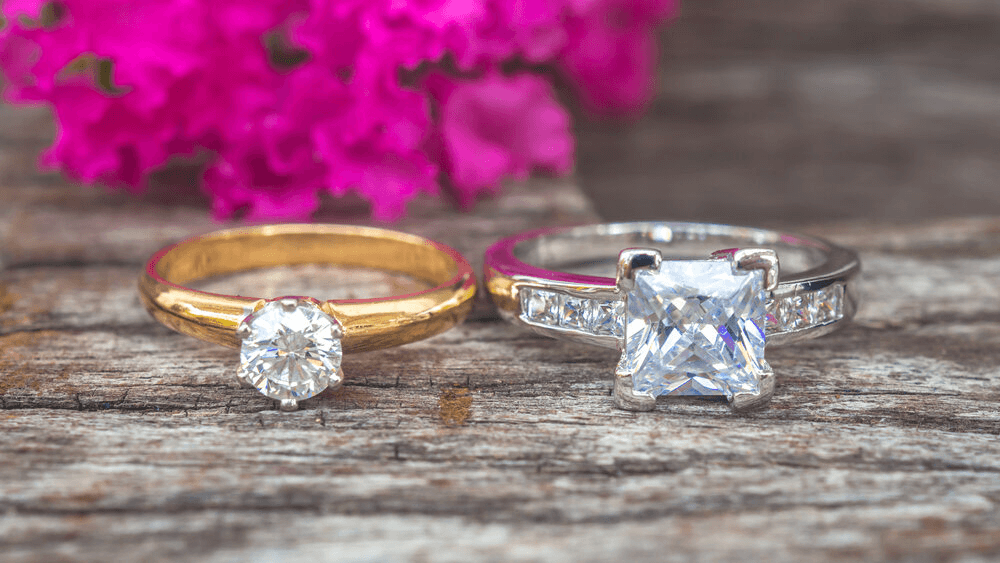White Gold vs. Sterling Silver: The Battle for Supremacy

By Gary A.

Edited by Olivia H.
Published Aug 13, 2024
Edited on Dec 18, 2024
If your partner has a lot of sterling silver in their jewelry collection, then it may seem like the obvious choice. Here are some reasons to second-think your decision…

Navigate this guide:
- 6 Quick Tips for Choosing Between Silver and White Gold
- Introduction: The Allure of Precious Metals
- Understanding White Gold
- The Sterling Silver Standard
- Comparing Durability and Care
- Hypoallergenic Qualities and Skin Sensitivity
- Cost Considerations: Investment and Affordability
- Aesthetic Appeal and Style
- Our Expert Take
- 10 Frequently Asked Questions
Before we get into the details, here are some tips to guide your decisions:
6 Quick Tips for Choosing Between Silver and White Gold
- Tip 1: Understand the Metal Composition:
Sterling Silver: Ensure that the ring is stamped with “925,” indicating it’s made of 92.5% pure silver. The remaining 7.5% is typically copper, which adds strength.
White Gold: Look for the karat stamp. 14K and 18K are common purities for white gold engagement rings. Remember, 18K means 75% gold mixed with 25% other metals, while 14K is 58.3% gold.
- Tip 2: Consider Durability for Everyday Wear:
Sterling Silver: While beautiful, silver is softer and more prone to scratches and dents. It might not be ideal for someone with an active lifestyle or rough hands.
White Gold: It’s more durable and resistant to wear, making it a popular choice for engagement rings that are worn daily.
- Tip 3: Be Aware of Maintenance Needs:
Sterling Silver: Requires regular polishing to prevent tarnishing. Over time, without proper care, silver can lose its shine.
White Gold: While it doesn’t tarnish like silver, it can lose its rhodium plating over time, leading to a yellowish tint. It will need re-plating every few years to maintain its bright white luster.
- Tip 4: Factor in Allergies:
Some white gold alloys contain nickel, which can be allergenic for some people. If you or your partner have a nickel allergy, ensure you choose nickel-free white gold or opt for sterling silver, which is typically alloyed with hypoallergenic copper.
- Tip 5: Budget Considerations:
Sterling Silver: Generally more affordable than white gold, making it a good option for those on a tighter budget.
White Gold: Pricier due to its gold content but offers a luxurious look and feel, justifying its cost.
- Tip 6: Resale and Investment Value:
White Gold: Holds a higher resale value due to its gold content.
Sterling Silver: While beautiful, it doesn’t hold its value in the same way gold does.
With these tips in mind, let Jeweler AI help you find the perfect engagement ring within your budget:
Introduction: The Allure of Precious Metals
Engagement rings are supposed to be high status possessions. Well, they are a symbol of love and commitment, they are also very coveted, enviable item to flash around at dinner parties, workplaces, family gatherings, and pretty much anywhere else where there are people. The diamond is the most obvious high status part of the ring, but it’s also about the metal. Jewelers don’t make engagement rings out of tin, for instance. Or, at least, they shouldn’t…
Metals are the obvious choice for an engagement ring. So, where does sterling silver – a common material in the jewelry world – rank in the world of platinum and diamond?
Decoding the Charm: Sterling Silver vs White Gold
From a distance, white gold and sterling silver are very similar. Unlike yellow gold, they have that stark, white appearance that a lot of us love. While some people love the warmth and luxury of yellow gold, others prefer the slightly more modern, more minimalistic look of a white metal.
Up close, however – and, most importantly, behind the scenes – there is a lot of difference between white gold and sterling silver, and that difference should dictate to you which metal you opt for in your engagement ring.
Understanding White Gold
Everything you need to know before you plump for sterling silver…
The Composition of White Gold
White gold is not naturally occurring. In the wild, gold is yellow, and the only way to change that color is through alloying. Any gold you see used in engagement rings will be alloyed, but whether or not it still appears yellow or not depends on the alloys used. White gold is intentionally combined with alloys that will white and its appearance and is often also plated in rhodium to ensure it has that bright, stark finish most of us are looking for.
You can check out our full guide to white gold, including how it’s made and maintained, by clicking here.
The Luster of Luxury: Why White Gold?
Despite the fact that white gold doesn’t look like traditional gold, it still carries that element of exclusivity and luxury the gold has held since time immemorial. Gold is the original symbol of love and commitment, and it’s also rare – or, at least, much rarer than silver. In whatever color you prefer, it is still the obvious choice for an engagement ring or any bridal jewelry.
The Sterling Silver Standard
Cheaper and more readily available, why not go for sterling silver?
What Makes Sterling Silver Shine?
Sterling silver specifically refers to a combination of silver and alloying metals, where at least 92.5% of the composition of the metal is silver. Like gold, silver is naturally quite soft and malleable, which is why, in jewelry, it’s typically alloyed.
Sterling silver is shiny and bright and has been valued across many, many generations – not least of all for the patina it forms over time, which gives it a more antiquated, unique look.
Sterling Silver in Jewelry Design
Sterling silver is a staple of fashion jewelry – lower cost pieces that are designed to be worn semi-regularly, and aren’t considered to be ‘precious’. In other words, it’s great for jewelry that is either going to be worn once in a while or jewelry we won’t mind replacing someday.
However, you probably won’t come across any engagement rings made from sterling silver – or, at least, you won’t come across any engagement rings worth your money that are made from sterling silver.
Comparing Durability and Care
Battle of the previous metals…
The Battle of Resilience: White Gold vs Sterling Silver
Sterling Silver: Softer and less durable, prone to scratches, dents, and damage with regular wear.
White Gold: Stronger and more durable, better suited to withstand daily wear and tear.
Tarnishing:
Sterling Silver: Tends to tarnish over time, requiring regular cleaning and maintenance.
White Gold: Does not tarnish, maintaining its appearance with minimal maintenance.
Setting Security:
Sterling Silver: Softer metal can affect the security of gemstone settings, increasing the risk of losing stones.
White Gold: Harder metal provides more secure settings for gemstones, ensuring they stay in place.
Maintenance: Preserving the Shine
Sterling Silver: Requires regular cleaning to prevent tarnish and maintain shine; may need polishing.
White Gold: Requires less frequent cleaning; occasional rhodium plating may be needed to maintain its bright white appearance.
Hypoallergenic Qualities and Skin Sensitivity
When choosing between sterling silver and white gold for your engagement ring, skin sensitivity is a crucial factor. White gold, often alloyed with nickel, can cause allergic reactions in sensitive individuals, unless it’s specifically labeled as nickel-free. On the other hand, sterling silver is typically more hypoallergenic, especially when alloyed with metals like copper.
Navigating Allergies with Elegance
If you have sensitive skin, sterling silver might be a safer choice, offering both beauty and comfort. However, always ensure your jewelry is well-crafted and free from potential irritants to enjoy your engagement ring without worry.
Cost Considerations: Investment and Affordability
A lot of newcomers feel tempted by the idea of sterling silver. After all, it looks more or less the same, but it’s way, way cheaper. So, why would we never recommend you take the budget option in this case?
The Price of Prestige: White Gold
White gold stands as a symbol of prestige and luxury, commanding a higher price due to its rarity and the intricate process required to achieve its stunning appearance. The investment in white gold is not just in its beauty but also in its durability and timeless appeal, and if you’re looking for an engagement ring that exudes sophistication and exclusivity, white gold, despite its higher price tag, remains an unparalleled choice.
Accessible Elegance: Sterling Silver
While sterling silver offers an elegant and affordable option for many types of jewelry, it may not be the best choice for an engagement ring. Its softness makes it less durable than white gold, meaning it may not withstand the everyday wear and tear that an engagement ring typically endures. For a symbol of lifelong commitment, investing in a more durable metal like white gold ensures that your ring remains as beautiful as the day you received it, standing the test of time.
Aesthetic Appeal and Style
So, you know how they act, but how do they look?
The Visual Impact: White Gold vs Sterling Silver
When it comes to visual impact, white gold and sterling silver each offers their own unique appeal. White gold, with its brilliant, lustrous finish often enhanced by rhodium plating, exudes a sense of luxury and timeless elegance. Its bright, stark appearance makes it a standout choice for engagement rings, catching the light beautifully and maintaining its allure over time.
Sterling silver, while also visually appealing with its bright and shiny finish, does not quite match the opulence of white gold. It tends to tarnish and requires regular maintenance to keep its shine. Over time, sterling silver can develop a patina, which, although unique, may not be desirable for an engagement ring meant to symbolize everlasting commitment. For a ring that maintains its visual impact and stands the test of time, white gold is the superior choice.
Our Expert Take
In conclusion, while sterling silver offers affordability and a timeless charm, it may not be the most suitable choice for an engagement ring due to its softer nature and higher maintenance requirements. White gold, with its luxurious appearance, durability, and investment value, stands as a more fitting option for a symbol of lifelong commitment. Choosing between these metals depends on your priorities—whether you value affordability or long-term durability. Let your decision reflect the significance of the occasion and the lasting promise it represents.
10 Frequently Asked Questions
Q: What is the main difference between sterling silver and white gold?
A: Sterling silver is an alloy made from 92.5% silver and 7.5% other metals, usually copper, known for its affordability and shine. White gold is an alloy of pure gold mixed with white metals like nickel or palladium, coated with rhodium for durability and shine, and is more expensive.
Q: Is white gold plated jewelry better than sterling silver?
A: White gold plated jewelry offers the look of white gold at a lower cost but requires more maintenance for the plating. Sterling silver is more affordable and easier to maintain, making it a good choice for everyday wear.
Q: Which is more durable, sterling silver or white gold?
A: White gold is more durable than sterling silver due to its composition and rhodium plating, making it better suited for everyday wear, especially for items like engagement rings.
Q: Which metal is hypoallergenic, sterling silver or white gold earrings?
A: Both can be hypoallergenic, but sterling silver is generally considered more so, especially if the white gold contains nickel, which can cause allergic reactions.
5. Between sterling silver and white gold, which one tends to wear off faster?
A: Sterling silver may tarnish and show wear faster than white gold, which is more resistant to wear and tarnish due to its rhodium plating.
Q: What is white gold filled compared to sterling silver?
A: White gold filled refers to a layer of white gold pressure bonded to another metal, offering a similar appearance to solid white gold but at a lower cost. Sterling silver is a solid metal alloy throughout.
Q: Can sterling silver be considered a good alternative for a white gold engagement ring?
A: Sterling silver can be a good alternative due to its affordability and aesthetic appeal, but it may require more maintenance and is less durable than white gold.
Q: How can you tell the difference between sterling silver and white gold?
A: Look for hallmarks; sterling silver is typically stamped with “925,” while white gold is marked with its karat content. White gold also has a rhodium plating, giving it a brighter, more durable finish.
Q: Is it okay to shower with sterling silver or white gold jewelry?
A: It’s generally safe to shower with white gold jewelry, thanks to its durable nature, but sterling silver may tarnish more quickly when exposed to water and chemicals frequently.
Q: How often should white gold and sterling silver jewelry be cleaned?
A: White gold should be cleaned occasionally to maintain its luster and may need re-plating every few years. Sterling silver should be cleaned regularly to prevent tarnish and maintain its shine.
Discover Your Perfect Match with Jeweler AI: Where Sterling Elegance Meets Golden Luxe.
FOLLOW-UP GUIDE SERIES

